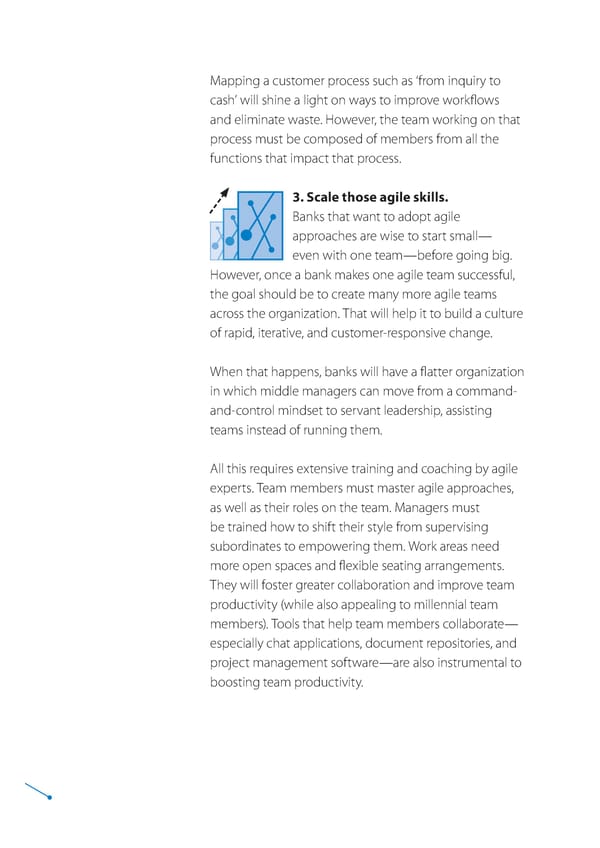Mapping a customer process such as ‘from inquiry to cash’ will shine a light on ways to improve workflows and eliminate waste. However, the team working on that process must be composed of members from all the functions that impact that process. 3. Scale those agile skills. Banks that want to adopt agile approaches are wise to start small— even with one team—before going big. However, once a bank makes one agile team successful, the goal should be to create many more agile teams across the organization. That will help it to build a culture of rapid, iterative, and customer-responsive change. When that happens, banks will have a flatter organization in which middle managers can move from a command- and-control mindset to servant leadership, assisting teams instead of running them. All this requires extensive training and coaching by agile experts. Team members must master agile approaches, as well as their roles on the team. Managers must be trained how to shift their style from supervising subordinates to empowering them. Work areas need more open spaces and flexible seating arrangements. They will foster greater collaboration and improve team productivity (while also appealing to millennial team members). Tools that help team members collaborate— especially chat applications, document repositories, and project management software—are also instrumental to boosting team productivity.
 How Retail CEOs Can Drive Agile to Grow Their Business Page 20 Page 22
How Retail CEOs Can Drive Agile to Grow Their Business Page 20 Page 22